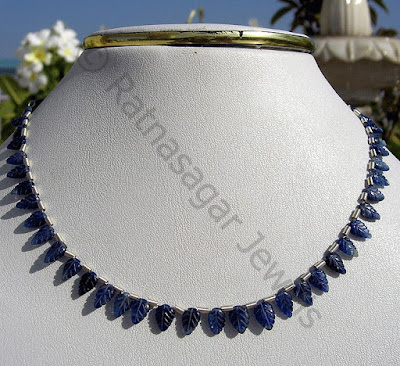Sapphires can be artificially created in labs in many ways. One of the most prolific technologies to produce these gemstones is lattice diffusion. So let us do a quick review on the lattice diffusion sapphires.
What is lattice diffusion after all?
Lattice diffusion is a commercial gemstone treatment process that involves the use of heat and chemical agents to diffuse the ingredients into a gemstone so that it will change colours as per requirement. The best part of using this technology is that gemstones of any colour can be produced. Sapphire gemstone showcasing myriad colours like vibrant red, fiery purple, electrifying blue, silky yellow and pitch dark blacks are produced using diffusion through the crystal structure.
In some cases, sapphire beads are treated with lattice diffusion that can have shallow embeds of colours superficially exhibited on the surface. In others, the colours can penetrate deep into the very core. It all depends on the conditions and impurities already present in the crystal structure that interacts with each other randomly during diffusion.
What is lattice diffusion after all?
Lattice diffusion is a commercial gemstone treatment process that involves the use of heat and chemical agents to diffuse the ingredients into a gemstone so that it will change colours as per requirement. The best part of using this technology is that gemstones of any colour can be produced. Sapphire gemstone showcasing myriad colours like vibrant red, fiery purple, electrifying blue, silky yellow and pitch dark blacks are produced using diffusion through the crystal structure.
In some cases, sapphire beads are treated with lattice diffusion that can have shallow embeds of colours superficially exhibited on the surface. In others, the colours can penetrate deep into the very core. It all depends on the conditions and impurities already present in the crystal structure that interacts with each other randomly during diffusion.
Is lattice diffusion for sapphire legal?
Heat treatment is a legal and accepted technique used on sapphires and rubies. Lattice diffusion, however, requires regulation from top gem laboratories and trade organisations as far as production and selling are concerned. Lattice diffusion, in no way, adds monetary value to the gemstone. It only improves the brilliance and clarity with a more consistent appearance.
It is legal and is very different from the process of dyeing and stabilising. The molecules added to the crystal structure can’t be detected even under the most powerful microscope. Hence, a gemstone dealer has to necessarily produce a certificate labelling the stone with lattice diffusion.
Types of diffusion methods:
Apart from lattice diffusion, certain gemstones are also treated using Surface Diffusion and Pipe or Channel Diffusion.
Surface diffusion:
It is the addition of natural colouring elements like iron, copper, titanium and chromium to the shallow surface of a gemstone during heat treatment.
- It issued largely on corundum and silica-based gemstones after cutting is done.
- The colour penetration is usually less than 30%.
- It is done at the melting point of the element so that it diffuses evenly into the crystal up to a depth of 1 millimetre.
Surface diffusion is done for blue sapphire beads and rubies. Colour obtained on a gemstone using the surface diffusion could be lost due to re-polishing, scratching or resetting.
Channel Diffusion:
Also called as pipe diffusion, this heat treatment technique is applicable to feldspar and Labradorite gemstones. It is done using copper as the diffusing element. The diffusion occurs along the channels and can be easily detected under microscope.
Identification of surface and channel diffusion sapphires is done by studying the bands and zones running parallel to the crystal facet.
Unlike the gemstones that are heat treated using chemical dyes and fillers, those produced using lattice diffusion are relatively sturdy and long lasting. They cost a little less than other varieties but exhibit the same brilliance and clarity. Moreover, they are easier to machine and cut.
Also called as pipe diffusion, this heat treatment technique is applicable to feldspar and Labradorite gemstones. It is done using copper as the diffusing element. The diffusion occurs along the channels and can be easily detected under microscope.
Identification of surface and channel diffusion sapphires is done by studying the bands and zones running parallel to the crystal facet.
Unlike the gemstones that are heat treated using chemical dyes and fillers, those produced using lattice diffusion are relatively sturdy and long lasting. They cost a little less than other varieties but exhibit the same brilliance and clarity. Moreover, they are easier to machine and cut.

